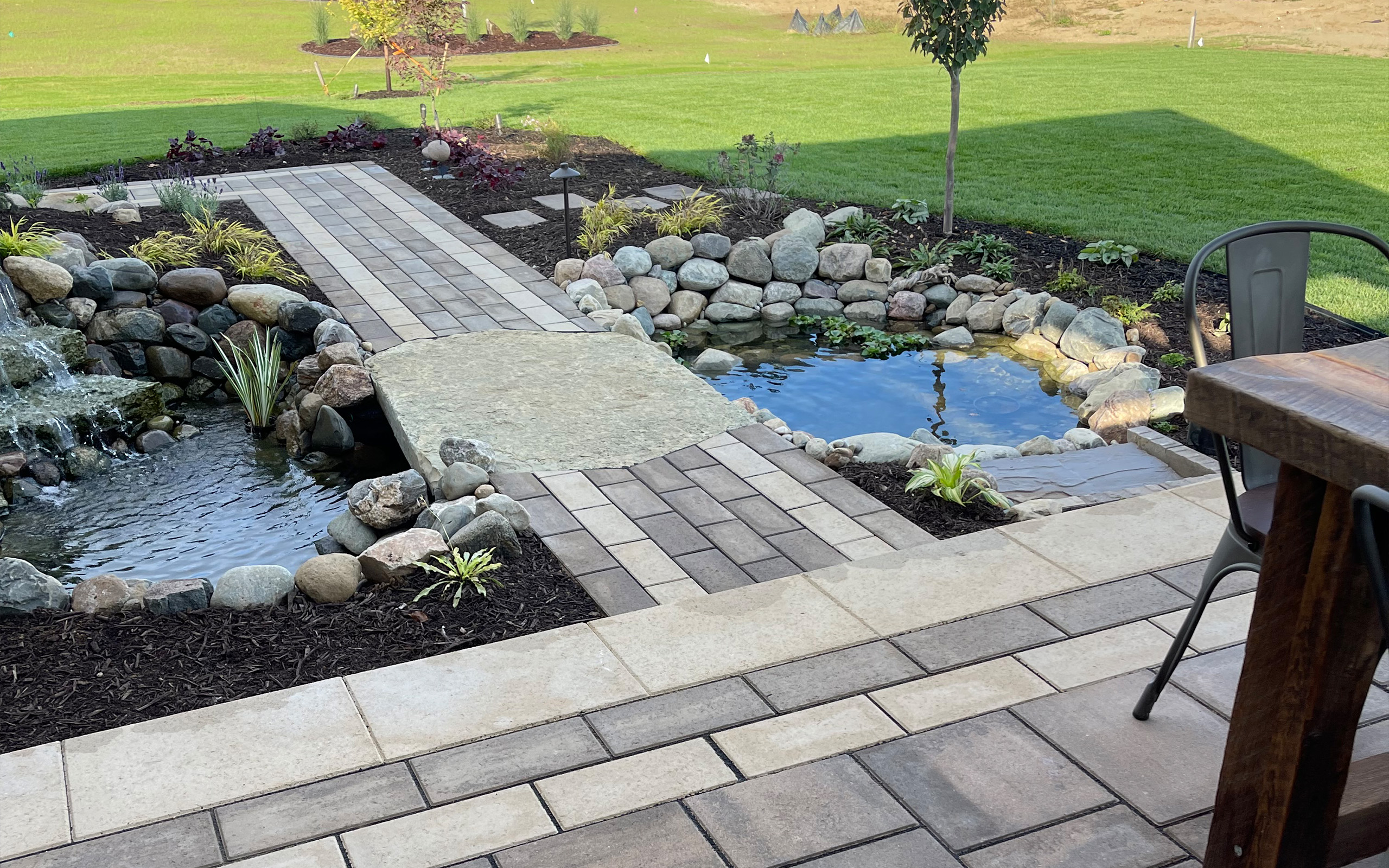Do you have areas of your yard that stay wet and soggy well into spring? Maybe there are sections of your yard that cannot even be mowed until June? What are your options?
There are many ways to address standing water or soggy areas of the yard. An evaluation of the area and surrounding areas as well as te main sources of water that gathers is required. Water could be coming from neighbors that have higher elevations, downspouts that are draining into an area or just a low spot that holds water.
Drains can be installed in some cases, if there is sufficient grade drop and places to direct water. This can be the perfect solution in the right situations, but often requires a lot of digging and placing drain lines that can clog over time if not properly cared for.
French Drains or Dry Wells can also be a good solution for specific areas and issues. These are sometimes best if you wish for the area to remain an open lawn area. Once again, they can fail after many years, and they are typically expensive to do.
I’ve installed outdoor sump pumps in an area that then drain directly into the storm sewer systems. This of course needs to be done with the city of township approvals where you live. Not all municipalities will allow this as some storm water systems are already overwhelmed. Be sure to check with your governing body before doing this.
One of the most ecofriendly and visually appealing options is a rain garden. Instead of pushing water to another area, embrace the water. Creating a garden space that is designed to be a collection point for water that will remain for several hours or a few days, and planting this area with plants that can handle the conditions meant to happen in this area is a great way to “handle” the water issues in your yard. Ideally, having an overflow area that eventually drains into storm sewers is ideal and because the rain garden filters the impurities in the water prior to storm sewer collection, you are also improving ground water conditions. The needed rain garden can be incorporated with other garden areas for a seamless look to your landscape. Many people looking at the area would not even know that the area is a water solution without you explaining it to them.
Rain gardens should be sized to handle the water flowing into an area and there are calculations to figure this out. You can have rain gardens where a downspout drains or sue a buried downspout drain to get the water across part of the yard and into the rain garden. There are a lot of creative ways to control the outcomes of water and good consultation with an experienced rain garden designer can help your project be more successful.

